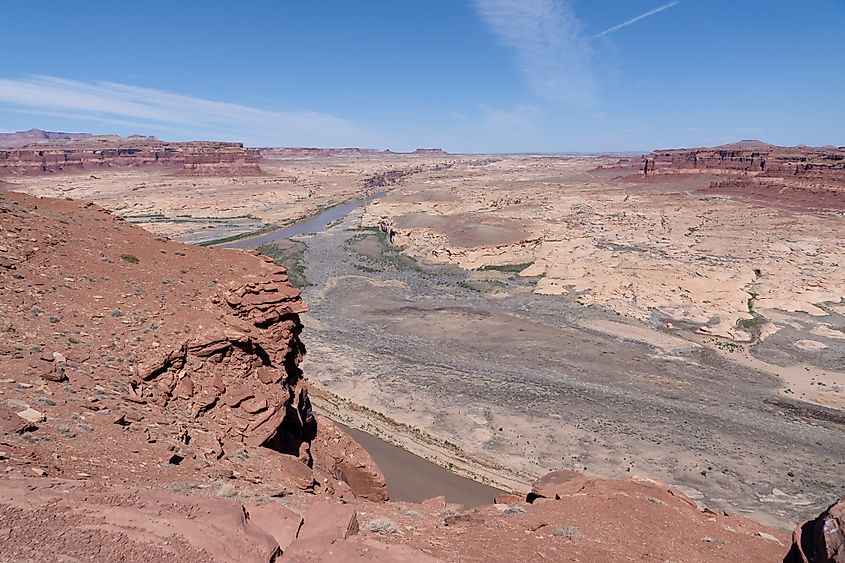
Why Is The Colorado River Drying Up?
The Colorado River system is the lifeline of the seven states and 30 indigenous tribes in the river's basin, providing water and energy to millions of people in the West. However, since the Southwest has been plagued by drought for the past ten years, the Colorado River has been particularly low. The ill effects of dams, agriculture, and climate change have significantly diminished the once-powerful river, raising concern as the Colorado River is the "Lifeline of the Southwest."
About The River
The Colorado River is the fifth-longest river in the United States at 1,450 miles. Its drainage basin, which spans 246,000 square miles, encompasses areas of seven states: Wyoming, Colorado, Utah, New Mexico, Nevada, Arizona, and California. Eleven national parks, including the Grand Canyon, the Rocky Mountains, Arches, and others, are also traversed by the river. In spite of just flowing on the western side of the Continental Divide, the Colorado River supplies nearly half of the water utilized in the Denver metro area.
Why Is The Colorado River Drying Up?

Since the turn of the century, the Colorado River's flow has decreased by 20%. Half of this drop is blamed on climate change, which has caused a 20-year megadrought in Colorado. Due to climate change, hotter weather, drier soils, and thirsty plants absorb snowmelt before it ever reaches a stream. In addition, the mountain snowpack that supplies the Colorado river is eroding over time and melting earlier as temperatures rise. Western Colorado's arid terrain and hotter air absorb the reducing runoff more quickly. Excessive usage of the river is another factor. The number of people who depend on the Colorado River is growing daily, which means there will likely be many more faucets and dry lawns. About 15% of the water in the Colorado River is used by cities and municipalities, which are also the main causes of rising river water withdrawals.
Disastrous Consequences

If the reservoirs at Glen Canyon or Hoover Dams (Lake Powell and Lake Mead, respectively) fall below the stage where power can be produced, there will be a huge crisis. Millions of dollars in profits used to finance numerous government programs, such as endangered species and salinity control programs, will be lost. The drought may, for the first time, result in a "compact call" and an official shortage of water delivery. As a result, states in the upper basin, like Colorado, might have to stop using some of their water to maintain the river's ability to flow downstream. Furthermore, if farmers and ranchers are compelled to limit their water usage any further owing to a delivery scarcity, they would go out of business. If the river continues to dry up, it can set off a cascade of legal disputes that would result in some water users losing access to the river.
What Can Be Done?

The priority system, which benefits users who possess older water rights and might shut off newer water right-holders, is a straightforward method of preserving more water in the Colorado River. Providing clean, water-saving energy sources is another option. States in the Colorado River basin can keep pursuing energy efficiency and water-efficient renewable energy sources, including wind, solar photovoltaics, and geothermal energy, to lessen the demand for water to cool thermoelectric power plants. Additionally, increasing federal collaboration for Colorado River management might be effective.
Using their respective skills to identify initiatives that address many issues at once, the Departments of the Interior and Agriculture can improve collaboration and enhance water conservation measures while addressing the effects of drought. Another fantastic way to conserve water for the river is water recycling. The drought-stricken Colorado River system will be restored with the aid of new water recycling facilities, swiftly implemented conservation initiatives, and repairs to leaky reservoirs and pipelines.
The greatest available research must be used to create novel solutions and collaborate across the landscapes and communities that depend on our western rivers to address these issues and combat climate change to save people and animals in the area.











